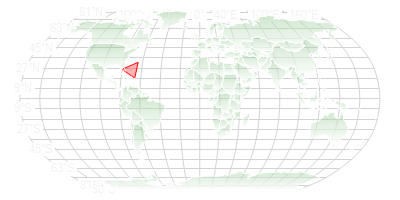Calculate points to create a curve or spline to draw an ellipse
I am working with Dundas maps and need to overlay the map with bubbles depicting some data. I want to add shapes to the map in order to achieve this. I can add a triangle (or any straight-line-polygon) like this:
public static void AddShape(this MapControl map, List<MapPoint> points, Color color, string name)
{
if (points[0].X != points[points.Count - 1].X && points[0].Y != points[points.Count - 1].Y)
points.Add(points[0]);
var shape = new Shape
{
Name = name,
BorderColor = color,
BorderStyle = MapDashStyle.Solid,
BorderWidth = 1,
Color = Color.FromArgb((int)(255 * (0.3)), color)
};
var segments = new[] {new ShapeSegment {Type = SegmentType.Polygon, Length = points.Count}};
shape.AddSegments(points.ToArray(), segments);
map.Shapes.Add(shape);
}
public static void AddBermudaTriangle(this MapControl map)
{
var points = new List<MapPoint>
{
new MapPoint(-80.15, 26.0667),
new MapPoint(-64.75, 32.333),
new MapPoint(-66.07, 18.41)
};
map.AddShape(points, Color.Red, "Bermuda Triangle");
}

You can see that the Bermuda Triangle overlays the map in red. Now I want to calculate a set of points to pass to my AddShape method开发者_运维技巧 that would draw an elipse or circle. I just need a simple algorithm for calculating the x and y coordinates of a given number of points. Perhaps starting with a given point that would represent the centre of the circle. For example:
public static void AddCircle(this MapControl map, Point centre, double radius, string name)
{
var points = new List<MapPoint>();
const int n = 360;
for(var i = 0; i < n; i++)
{
//calculate x & y using n, radius and centre
double x = 0;
double y = 0;
points.Add(new MapPoint(x, y));
}
map.AddShape(points, Color.Red, name);
}
I know that the x,y calculation is simple trigonometry but I'm suffering a brain freeze. Help!
EDIT (Solved using tur!ng's code):
public static void AddCircle(this MapControl map, Color color, MapPoint centre, double radius, string name)
{
var points = new List<MapPoint>();
const int n = 360;
for(var i = 0; i < n; i++)
{
var x = (radius * Math.Cos(i * Math.PI / 180)) + centre.X;
var y = (radius * Math.Sin(i * Math.PI / 180)) + centre.Y;
points.Add(new MapPoint(x, y));
}
map.AddShape(points, color, name);
}

The blue circle (over Greenwich) is distorted because of the map projection over a Robinson grid.
double x = centre.x + radius*Math.cos(2*Math.PI/360 * i);
double y = centre.y + radius*Math.sin(2*Math.PI/360 * i);
for a circle.
Copied from an old C++ program I wrote a long time ago, it still runs at dozens of places:
// Approximate arc with small line segments
double sa = dp[ix].center.angle(dp[ix].co);
double ea = dp[ix].center.angle(dp[ix+1].co);
double r = scale * dp[ix].radius;
double rot = ea - sa;
double inc = rot;
if (dp[ix].dir == ROTCW) rot = -rot;
if (rot < 0) rot += 2*PI;
// Compute rotation increment that generates less than 1/4 pixel error
if (r > 2) inc = 2*acos(1-0.25/r);
if (inc >= rot || r < 2) addPoint(x, y);
else {
int cnt = int(1 + rot / inc);
inc = rot / cnt;
if (dp[ix].dir == ROTCW) inc = -inc;
for (int jx = 0; jx < cnt; ++jx) {
x = offsx + scale * dp[ix].center.x + r * cos(sa);
y = offsy + scale * dp[ix].center.y + r * sin(sa);
addPoint(x, y);
sa += inc;
}
}
acos() is the same as Math.Acos().
Recall that the formula for a circle may be expressed as
(x/r)**2 + (y/r)**2 = 1
where x and y are coordinates and r is radius.
The formula for an ellipse may be expressed as
(x/a)**2 + (y/b)**2 = 1
where a and b are the semimajor and semiminor axes (in no particular order). Choose a and b to give you an ellipse that "looks good".
You usually want to pick your points around a circle at equal angular steps, to make a better looking polygonal approximation to a true circle. For this, you use the substitutions
x = r cos theta
y = r sin theta
and run your loop for theta from zero to 2*pi. For your ellipse, you'll use
x = a cos theta
y = b sin theta
This gives you an ellipse with the semimajor and semiminor axes parallel to the X and Y axes and centered at the origin. If you want an arbitrary orientation, with an arbitrary position, you'll need to apply a rotation by an angle phi, and a translation. Any good computer graphics text will give you the necessary equations, most likely in matrix form.
 加载中,请稍侯......
加载中,请稍侯......
精彩评论